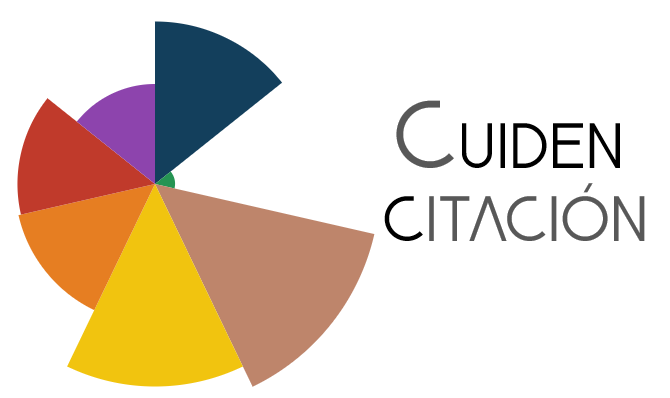Infecção pelo HIV em jovens: prevalência e fatores associados
DOI:
https://doi.org/10.15253/2175-6783.20232483018Palavras-chave:
Soroprevalência de HIV, Adolescente, Adulto joven, Comportamentos de Risco à Saúde, Estudos TransversaisResumo
Objetivo: estimar a prevalência e fatores associados à infecção pelo Human Immunodeficiency Virus (HIV) em jovens. Métodos: estudo transversal, realizado em dois Centros de Testagem e Aconselhamento, com 279 jovens entre 15 e 24 anos. Realizou-se teste anti-HIV e aplicou-se instrumento estruturado. Empregaram-se análise bivariada e regressão logística com correção de Bonferroni para investigar a associação entre as variáveis e o desfecho sorológico. Resultados: a prevalência de HIV entre os jovens foi de 3,9% (Intervalo de confiança-IC95%: 1,0-10,1). A associação com o desfecho HIV mostrou-se estatisticamente significante entre jovens do sexo masculino (p=0,001), homossexuais (p<0,001), exposição sexual como motivo do teste (p=0,034), percepção de alto de risco de adquirir HIV (p=0,002) e prática de sexo anal (p=0,004). Jovens homossexuais (Odds ratio-OR=13,46; IC95%:1,14-15,84) e com percepção de alto risco de adquirir o HIV (OR=18,11; IC95%: 2,28-143,69) tiveram maiores chances de apresentarem resultado positivo para HIV. Conclusão: foi possível identificar a prevalência e fatores associados ao HIV em jovens. Contribuições para a prática: as informações geradas podem disponibilizar evidências aos formuladores de políticas, gestores e profissionais de saúde, e subsidiar a elaboração de estratégias que contemplem o aperfeiçoamento das ações de prevenção, coordenadas e ajustadas aos contextos comportamentais nos cenários estudados.
Referências
Joint United Nations Programme on HIV/Aids (UNAIDS). Dangerous inequalities: world AIDS day report 2022 [Internet]. 2022 [cited Jan 4, 2023]. Available from: https://www.unaids.org/sites/default/files/media_asset/dangerous-inequalities_en.pdf
Khanna AS, Edali M, Ozik J, Collier N, Hotton A, Skwara A, et al. Projecting the number of new HIV infections to formulate the “Getting to Zero” strategy in Illinois, USA. Math Biosci Eng. 2021;18(4):3922-38. doi: https://doi.org/10.3934/mbe.2021196
World Health Organization (WHO). HIV data and statistics - 2020 estimates [Internet]. 2020 [cited Jan 29, 2023]. Available from: https://www.who.int/data/gho/data/indicators/indicator-details/GHO/estimated-number-of-people--living-with-hiv
Ministério da Saúde (BR). Boletim Epidemiológico HIV/Aids 2022 [Internet]. 2022 [cited Jan 5, 2023]. Available from: https://www.gov.br/aids/pt-br/centrais-de-conteudo/boletins-epidemiologicos/2022/hiv-aids
Chen M, Ma Y, Chen H, Dai J, Luo H, Yang C, et al. Demographic characteristics and spatial clusters of recent HIV-1 infections among newly diagnosed HIV-1 cases in Yunnan, China, 2015. BMC Public Health. 2019;19:1507. doi: https://dx.doi.org/10.1186/s12889-019-7557-8
Ganapathi L, McFall AM, Srikrishnan AK, Kumar MS, Anand S, Lucas GM, et al. Young people who inject drugs in India have high HIV incidence and behavioural risk: a cross-sectional study. J Int AIDS Soc. 2019;22(5):e25287. doi: https://doi.org/10.1002/jia2.25287
Yoo M, Seong J, Yoon JC, Cha JO, Chung YS, Kim K, et al. Characteristics of adolescents and young adults with HIV in the Republic of Korea from 2010 through 2015. Rep Sci. 2020;10(1):9384. https://doi.org/10.1038/s41598-020-66314-0
Culbreth R, Swahn MH, Salazar LF, Ametewee LA, Kasirye R. Risk Factors associated with HIV, Sexually Transmitted Infections (STI), and HIV/STI co-infection among youth living in the slums of Kampala, Uganda. AIDS Behav. 2020;24(4):1023-31. https://doi.org/10.1007/s10461-019-02444-5
Velo-Higueras C, Cuéllar-Flores I, Sainz-Costa T, Navarro-Gómez ML, García-Navarro C, Fernández-McPhee C, et al. Young adults and HIV. Awareness and risk behaviour of a group living in Spain. Enferm Infecc Microbiol Clin (Engl Ed). 2019;37(3):176-82. doi: https://dx.doi.org/10.1016/j.eimc.2018.05.015
Johnston LG, Soe P, Widihastuti AS, Camellia A, Putri TA, Rakhmat FF, et al. Alarmingly high HIV prevalence among adolescent and young men who have sex with men (MSM) in urban Indonesia. AIDS Behav. 2021;25(11):3687-94. doi: https://doi.org/10.1007/s10461-021-03347-0
Szwarcwald CL, Souza Júnior PRB, Pascom ARP, Coelho RA, Ribeiro RA, Damacena GN, et al. HIV incidence estimates by sex and age group in the population aged 15 years or over, Brazil, 1986-2018. Rev Soc Bras Med Trop. 2022;28(55):e0231. doi: https://doi.org/10.1590/0037-8682-0231-2021
Castoldi L, Berengan MM, Both NS, Fortes VS, Pinheiro TV. HIV post-exposure prophylaxis in vulnerable populations: a retrospective longitudinal study in a public health outpatient clinic in Rio Grande do Sul, Brazil, 2015-2018. Epidemiol Serv Saúde. 2021;30(2):e2020646. doi: https://doi.org/10.1590/S1679-49742021000200017
Monteiro SS, Brigeiro M, Vilella WV, Mora C, Parker R. Challenges facing HIV treatment as prevention in Brazil: an analysis drawing on literature on testing. Ciênc Saúde Coletiva. 2019;24(5):1793-807. doi: https://dx.doi.org/10.1590/1413-81232018245.16512017
Medeiros DA, Palácio MAV, Gois LL, Takenami I. Profile of users living with HIV/AIDS assisted at a Counseling and Testing Center in the countryside of Bahia state: a longitudinal retrospective study. Medicina (Ribeirão Preto). 2021;54(1):e173345. doi: https://doi.org/10.11606/issn.2176-7262.rmrp.2021.173345
Cabral Neto A, Araújo MSV. Expansão da educação superior no instituto federal de educação, ciência e tecnologia da Paraíba: os delineamentos no período 2008-2015. HOLOS. 2020;(4):1-21. https://doi.org/10.15628/holos.2020.9903
Bay MB, Freitas MR, Lucas MCV, Souza ECF, Roncalli AG. HIV testing and HIV knowledge among men who have sex with men in Natal, Northeast Brazil. Braz J Infect Dis. 2019;23(1):2-7. doi: https://doi.org/10.1016/j.bjid.2019.01.003
Silva JKB, Santos JM, Moreira WC, Romero ROG, Leadebal ODCP, Nogueira JA. Multilevel model in the identification of behavioral and structural risk factors for HIV: integrative review. Rev Bras Enferm. 2023;76(1):e20210853. doi: https://doi.org/10.1590/0034-7167-2021-0853
Damacena GN, Szwarcwald CL, Motta LR, Kato SK, Adami AG, Paganellaet MP, et al. A portrait of risk behavior towards HIV infection among Brazilian army conscripts by geographic regions, 2016. Rev Bras Epidemiol. 2019;22(1):e190009. doi: https://doi.org/10.1590/1980-549720190009.supl.1
Rodrigues IM, Faria BA, Marquez LV, Pires US, Rende VF, Silva WNT, et al. Epidemiological analysis of Aids cases in Southeastern Brazil from 2010 to 2019. Rev Población Salud Mesoamérica [Internet]. 2022 [cited Jan 12, 2023];19(2):162-83. Available from: https://www.scielo.sa.cr/pdf/psm/v19n2/1659-0201-psm-19-02-00162.pdf
Weber A, Tombini LHT, Dalla RGF, Souza T, Silva DTR, Pitilin, ÉDB. Analysis of temporal trend in HIV/AIDS infection in western Santa Catarina: a retrospective study 1984-2015. Rev Epidemiol Controle Infecç. 2020;10(1):30-7. doi: https://doi.org/10.17058/jeic.v1i1.13089
Gabster A, Pascale JM, Cislaghi B, Francis SC, Weiss HA, Martinez A, et al. High Prevalence of sexually transmitted infections, and high-risk sexual behaviors among indigenous adolescents of the Comarca Ngäbe-Buglé, Panama. Sex Transm Dis. 2019;46(12):780-7. doi: https://dx.doi.org/10.1097/OLQ.0000000000001070
Torres TS, Coelho LE, Konda KA, Vega-Ramirez EH, Elorreaga OA, Diaz-Sosa D, et al. Low socioeconomic status is associated with self-reported HIV positive status among young MSM in Brazil and Peru. BMC Infect Dis. 2021;21:726. doi: https://doi.org/10.1186/s12879-021-06455-3
Mao X, Wang Z, Hu Q, Huang C, Yan H, Wang Z, et al. HIV incidence is rapidly increasing with age among young men who have sex with men in China: a multicentre cross-sectional survey. HIV Med. 2018;19(8):513-22. doi: https://doi.org/10.1111/hiv.12623
Knauth DR, Hentges B, Macedo JL de, Pilecco FB, Teixeira LB, Leal AF. O diagnóstico do HIV/aids em homens heterossexuais: a surpresa perma- nece mesmo após mais de 30 anos de epidemia. Cad Saúde Pública. 2020;36(6):e00170118. doi: https://doi.org/10.1590/0102-311X00170118
Silva JRP, Knauth DR, Leal AF, Magno L, Dourado I, Veras, MASM, Kerr LRS. Factors associated with inconsistent condom use among men who have sex with men in Brazil and their commercial sexual partners. Cad Saúde Pública. 2023;38(11):e00099822. doi: https://dx.doi.org/10.1590/0102-311XPT099822
Pravosud V, Ballard AM, Holloway IW, Young AM. Online partner seeking and sexual behaviors among men who have sex with men from small and midsized towns: cross-sectional study. JMIR Form Res. 2022;10(6):e35056. doi: https://doi.org/10.2196/35056
Crowell TA, Nitayaphan S, Sirisopana N, Wansom T, Kitsiripornchai S, Francisco L, et al. Factors associated with testing for HIV and other sexually transmitted infections in men who have sex with men and transgender women in Bangkok, Thailand. AIDS Res Ther. 2022;19(1):25. doi: https://doi.org/10.1186/s12981-022-00449-0
Torres TS, Marins LMS, Veloso VG, Grinsztejn B, Luz PM. How heterogeneous are MSM from Brazilian cities? An analysis of sexual behavior and perceived risk and a description of trends in awareness and willingness to use pre-exposure prophylaxis. BMC Infect Dis. 2019;19(1):1067. doi: http://doi.org/10.1186/s12879-019-4704-x
Khawcharoenporn T, Mongkolkaewsub S, Naijitra C, Khonphiern W, Apisarnthanarak A, Phanuphak N. HIV risk, risk perception and uptake of HIV testing and counseling among youth men who have sex with men attending a gay sauna. AIDS Res Ther. 2019;16(1):13. doi: http://doi.org/10.1186/s12981-019-0229-z
Luz PM, Torres TS, Almeida-Brasil CC, Marins LMS, Veloso VG, Cox BGJ, et al. High-risk sexual behavior, binge drinking and use of stimulants are key experiences on the pathway to high perceived HIV risk among men who have sex with men in Brazil. AIDS Behav. 2021;25(3):748-57. doi: https://doi.org/10.1007/s10461-020-03035-5
Downloads
Publicado
Como Citar
Edição
Seção
Licença
Copyright (c) 2023 Rev Rene

Este trabalho está licenciado sob uma licença Creative Commons Attribution 4.0 International License.









